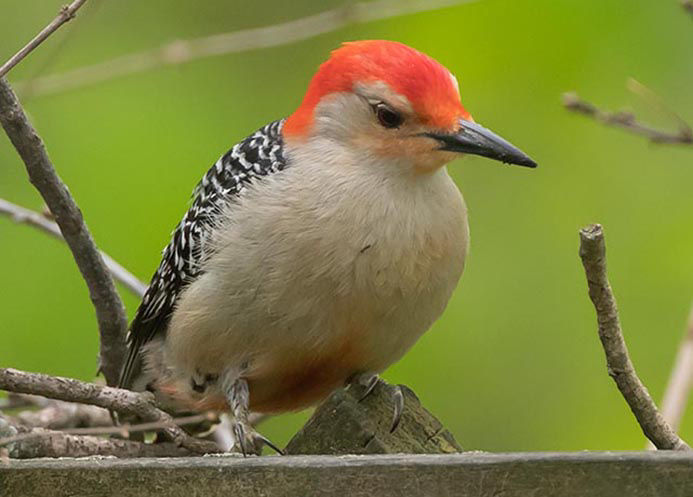Native Woodpeckers in Florida: An Overview to Species and Behaviors
Native Woodpeckers in Florida: An Overview to Species and Behaviors
Blog Article
Woodpeckers: A Comprehensive Guide to Recognizing These Unique Birds
Woodpeckers, with their unique behaviors and physical attributes, have long mesmerized the curiosity of ornithologists and nature enthusiasts alike. As we check out the intricate composition, diverse varieties, and ecological significance of woodpeckers, a deeper gratitude for these special birds and the enigmas they hold unravels.

Woodpeckers' Drumming Actions
Woodpeckers show a rhythmic and precise drumming actions that serves different crucial functions in their day-to-days live. This behavior is mainly related to interaction, region defense, and foraging. The unique drumming noise is produced by the fast pecking of their beaks against tough surface areas such as tree trunks, branches, or perhaps steel things.
Interaction is a crucial element of woodpecker actions, and drumming plays a substantial duty in this process. Woodpeckers make use of drumming to develop their presence, draw in companions, and maintain contact with their companions and offspring. The regularity, strength, and period of drumming series share details messages to other woodpeckers in the location.
Along with interaction, woodpeckers make use of drumming habits for area defense. Woodpeckers in Florida. The loud and repetitive drumming offers as a cautioning to prospective trespassers, signifying that the location is currently claimed. By establishing their area through drumming, woodpeckers reduce the probability of conflicts over valuable resources such as food and nesting sites
Furthermore, woodpeckers likewise employ drumming as a foraging technique. The rhythmic pecking helps them situate pests concealing below the bark of trees by producing resonances that disrupt the prey's cover-up. This behavior showcases the adaptability and ingenuity of woodpeckers in utilizing their drumming skills for several crucial functions.
One-of-a-kind Adjustments for Tree Climbing
Having mastered the art of drumming to connect, defend territory, and forage, woodpeckers have actually progressed special adaptations that facilitate their remarkable climbing up abilities in their arboreal habitats. Woodpeckers have zygodactyl feet, with two toes directing ahead and 2 toes directing in reverse. These tail plumes supply stability and equilibrium, allowing woodpeckers to navigate up tree trunks with precision and agility.
Additionally, woodpeckers have powerful neck muscle mass and an unique head structure that aid in their climbing up capabilities. Their strong neck muscular tissues enable them to rapidly eat tree bark without experiencing whiplash, while their thick skull and find this small mind serve as shock absorbers, shielding them from the effect of repeated drumming. These adaptations collectively enable woodpeckers to navigate the upright world of trees with effectiveness and poise.
/https://tf-cmsv2-smithsonianmag-media.s3.amazonaws.com/filer_public/30/ac/30acf469-09cd-4fcc-a812-1aa30f477578/aprmay2024_l09_woodpeckers.jpg)
Function of Woodpeckers in Communities
By foraging for bugs under the bark of trees, woodpeckers help manage insect populaces, avoiding break outs that might harm the overall wellness of the woodland. In addition, woodpeckers develop cavities in trees that offer as important nesting websites for a range of various other bird species, advertising biodiversity within the community.
Furthermore, the drumming and articulations of woodpeckers play an essential function in interaction and territory establishment. These audios not only serve to attract friends however also aid specify borders between different woodpecker regions, lowering disputes and promoting a harmonious coexistence within the woodland community. In general, the presence of woodpeckers in site web forest ecosystems highlights their significance as keystone varieties, influencing the dynamics and functioning of these environments in multifaceted methods.
Makeup: Specialized Beaks and Feet
In the complex internet of woodland ecological communities, the specialized beaks and feet of woodpeckers are important adjustments that enable them to meet their crucial ecological duties. Woodpeckers possess unique anatomical attributes that are particularly developed to assist them in their foraging and nesting habits.
One of the most distinguishing characteristic of woodpeckers is their strong, chisel-shaped beaks. These beaks are flawlessly adapted for exploration into timber to discover bugs, larvae, and sap surprise below the bark of trees. The strong muscle mass and tough framework of their beaks permit woodpeckers to peck at a rate of approximately 20 times per secondly without creating damages to their skulls.
Furthermore, woodpeckers have actually specialized feet that aid in their acrobatic climbing up capabilities. Their feet have two toes aiming forward and 2 toes directing backwards, giving a solid grasp on vertical surface areas (Woodpeckers in Florida). This distinct foot setup, along with rigid tail plumes that serve as a supportive prop, permits woodpeckers to hold on to tree trunks and branches with convenience while they look for food or excavate nesting tooth cavities
Woodpecker Variety Diversity
What aspects add to the impressive variety of woodpecker varieties throughout different habitats and areas? Woodpeckers are a diverse group of birds located throughout various communities worldwide, with over 200 recognized varieties showing adjustments to different atmospheres. One vital aspect driving this diversity is the availability of suitable habitats. Woodpeckers have advanced to occupy a variety of atmospheres, from forests and forests to meadows and deserts, each presenting unique obstacles that have actually affected the advancement of distinct woodpecker species.
These adaptations enable woodpeckers to forage efficiently in their corresponding environments, lowering competition among types and advertising particular niche distinction. Furthermore, geographical isolation and historical elements have actually played a duty in forming the distribution and diversity of woodpecker types, leading to the wide variety of specialized adjustments seen in these interesting birds.

Verdict
In conclusion, woodpeckers are interesting birds that exhibit one-of-a-kind drumming behavior, specialized adjustments for tree climbing, and play essential duties in communities. With a diverse range of woodpecker varieties discovered worldwide, these birds are essential for keeping the health and equilibrium over at this website of forests and timberlands.
Report this page